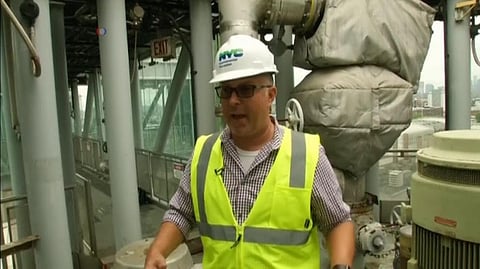
- Home
- न्यूजग्राम
- NewsGram USA
- India
- World
- Politics
- Entertainment
- Culture
- Lifestyle
- Economy
- Sports
- Sp. Coverage
- Misc.
- NewsGram Exclusive
- Jobs / Internships

Brooklyn, August 7, 2017 : Americans are believed to throw away about one-third of the available food. However, what we see as trash is also seen as a business opportunity by a few. A facility known as the New Town Creek waste Water Treatment plant is using wasted food from Brooklyn and turning it into electricity, completely justifying the concept of the 3-C's we have all studied about in school.
If an increasing number of people around the world subscribe to the Reduce, Reuse and Recycle way of life, a lot of the world's problem of waste generation will be addressed, and eventually solved.
But presently, the concept seems too vague and utopian. So what are we doing right about NOW?
Mechanisms have been developed to convert all the waste produced into clean energy and some other usable product. Now if you ask me how that is contributing to a better society, I'd like to tell you that heaps and mountain-full of landfills are slowly becoming a thing of the past. And in the longer run, the practice is also going to reduce enormous amounts of greenhouse gas emission.
For a number of years now, New York's fourteen waste-water treatment plants have been processing the city's raw sewage into clean water, fertilizers and methane, which forms the main component of natural gas. Eventually, New York authorities realized that huge amounts of other organic wastes sent to landfills can also be converted to energy.
Pam Elarado of the New York Bureau of Waste Water Treatment told VOA news that the food waste is similar to the sewage generated at a waste-water treatment plant.
For the same purpose, in the eight egg-shaped digesters at the New Town Creek Waste Water Treatment plant, the bacteria slowly break down the so called bio-slurry into a more stable material, useful in the gas.
Newtown Creek Waste Water plant, operational since 2010, is the largest sewage treatment facility operated by the New York City Department of environmental protection.
The plant overlooks conversion of organic waste from kitchens, homes, hotels, and food-factories into cleaner energy and compost.
Frank Lonear told VOA news that the tank currently is capable of holding about three million gallons of a combination of bio-sewage which comes from waste-water and also food waste. "It sits here on an average of about 30 days for the bacteria to break it down to create methane gas", he said.
The plant currently is capable of processing about 60 tonnes of food waste daily but plans to increase the capacity to 250 tonnes. The daily production of methane is about 85,000 cubic meters which needs additional treatment to be turned into natural gas.
If all the food waste being processed at the plant was instead just dumped at a landfill, it still would have provided methane in the process of rotting and decomposition. However in such a condition, all the released gas would have sparked directly into the atmosphere thus, contributing to climate change. Methane is a powerful greenhouse gas, after all
In such a scenario, this practice of anaerobic conversion is diverting food waste from landfills, cutting down on harmful emissions and also creating a few jobs.
According to reports, New York embraced the practice of food-waste conversion very quickly. Sarah Schiwal, a resident of Brooklyn swears by the practice and said, "It is so simple and it cuts down on our trash. I can't understand by anybody wouldn't want it", as told to VOA news.
If you're wondering that the plant contributes only scientifically to the city, then you're mistaken. The egg shaped digesters are illuminated at night time and provide a rather aesthetic and pleasing cityscape along the Brooklyn waterfront.
While it cannot be denied that these plants are solving a great deal of the problem, the fact remains that the root cause of the problem is still not being addressed. Consumers continue to throw away a staggering amount of food, which needs to be taken into account and kept under check.
At present, wastage from food makes up the largest share of the constitution of landfills and Americans are believed to throw away about one-third of the available food. While on one hand it is important to devise ways to prevent food waste, it is also important to keep the food from being wasted. Keeping the waste out of landfills and producing clean energy in its place can go a long way for mankind to reduce our carbon footprint and reduce our reliance on fossil fuels.
